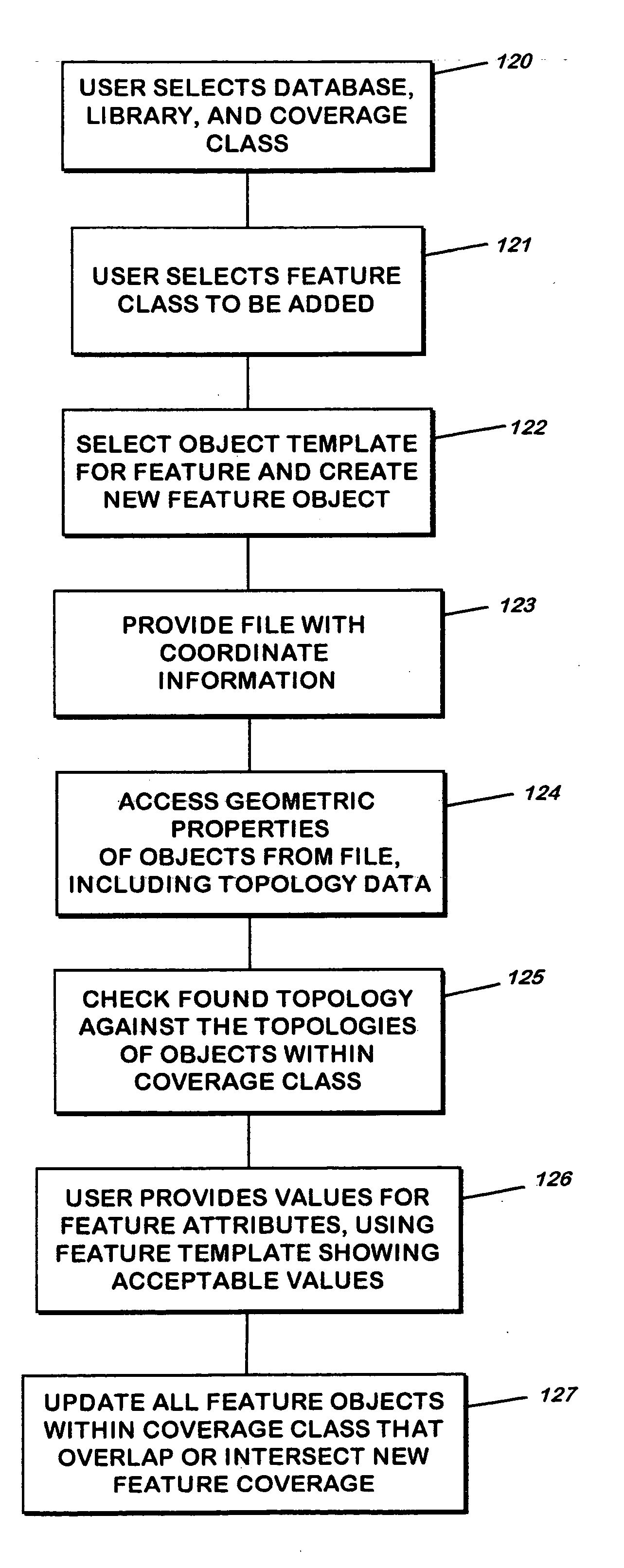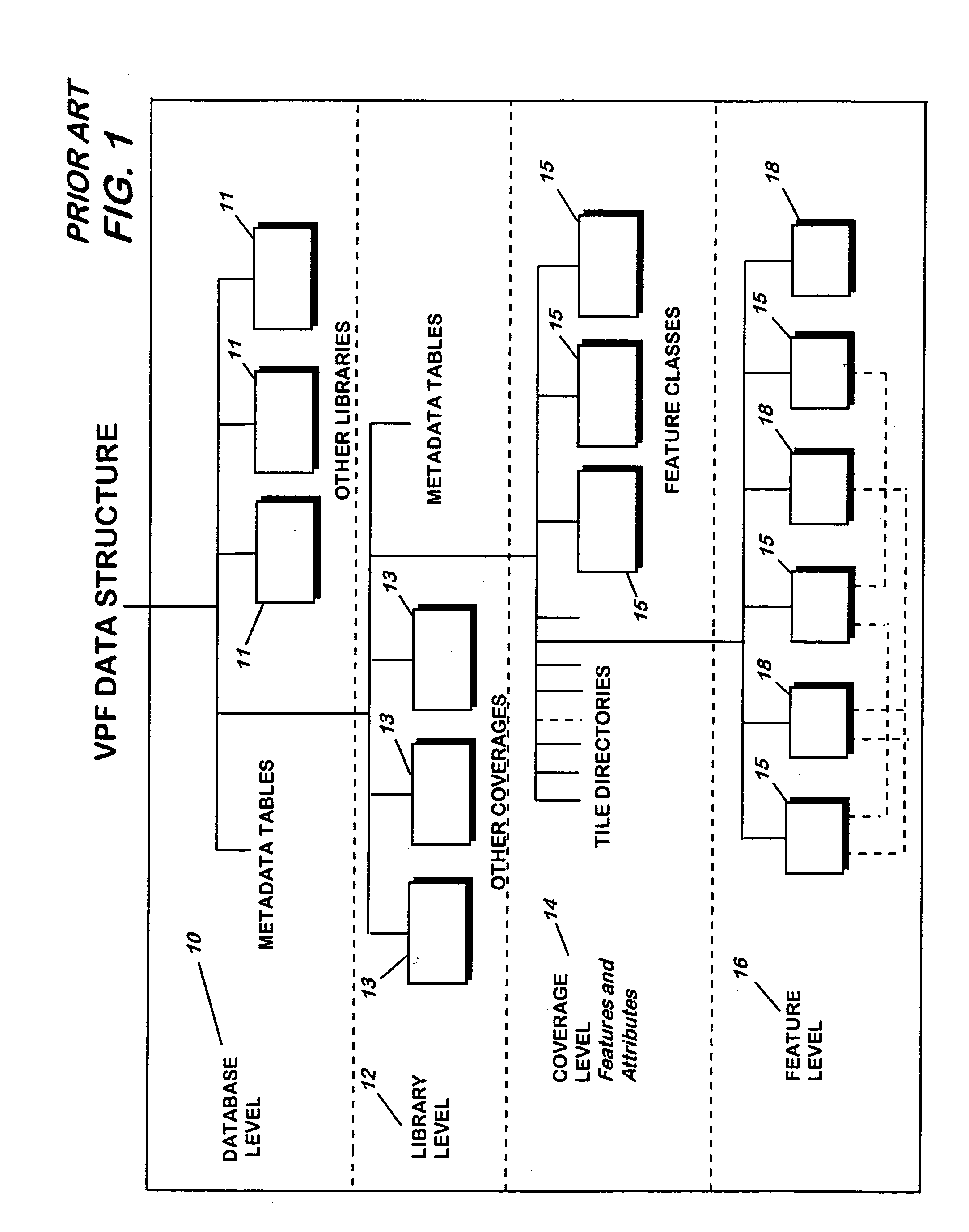Method and apparatus for building and maintaining an object-oriented geospatial database
a geospatial database and object-oriented technology, applied in the field of database construction and maintenance, can solve the problems of time-consuming and subsequently restrictive processing, limited vpf software offered by niia, and limited to simple map viewing, etc., and achieve the effect of easy data expor
- Summary
- Abstract
- Description
- Claims
- Application Information
AI Technical Summary
Benefits of technology
Problems solved by technology
Method used
Image
Examples
Embodiment Construction
[0056] A preferred embodiment of the invention is readily implemented on existing hardware-independent processing platforms with sufficient computer-readable storage for building, maintaining, and querying a sufficiently large object-oriented database to support the data of a VPF file.
[0057] At a threshold level, it may be helpful to discuss some of the basic distinctions between the object-oriented approach to data storage and retrieval and the georelational approach as is found in the present relational VPF data structure. In the georelational approach, all data is organized into tables of rows and columns, and a given row's identity is based on its primary and secondary key values. Query and analysis procedures are external to the data tables and are maintained independently of them. As the data structures change, so must the query and analysis procedures. Also, as the data structures become more complex, keeping the data synchronized with each other through an updating process ...
PUM
 Login to View More
Login to View More Abstract
Description
Claims
Application Information
 Login to View More
Login to View More - R&D
- Intellectual Property
- Life Sciences
- Materials
- Tech Scout
- Unparalleled Data Quality
- Higher Quality Content
- 60% Fewer Hallucinations
Browse by: Latest US Patents, China's latest patents, Technical Efficacy Thesaurus, Application Domain, Technology Topic, Popular Technical Reports.
© 2025 PatSnap. All rights reserved.Legal|Privacy policy|Modern Slavery Act Transparency Statement|Sitemap|About US| Contact US: help@patsnap.com



